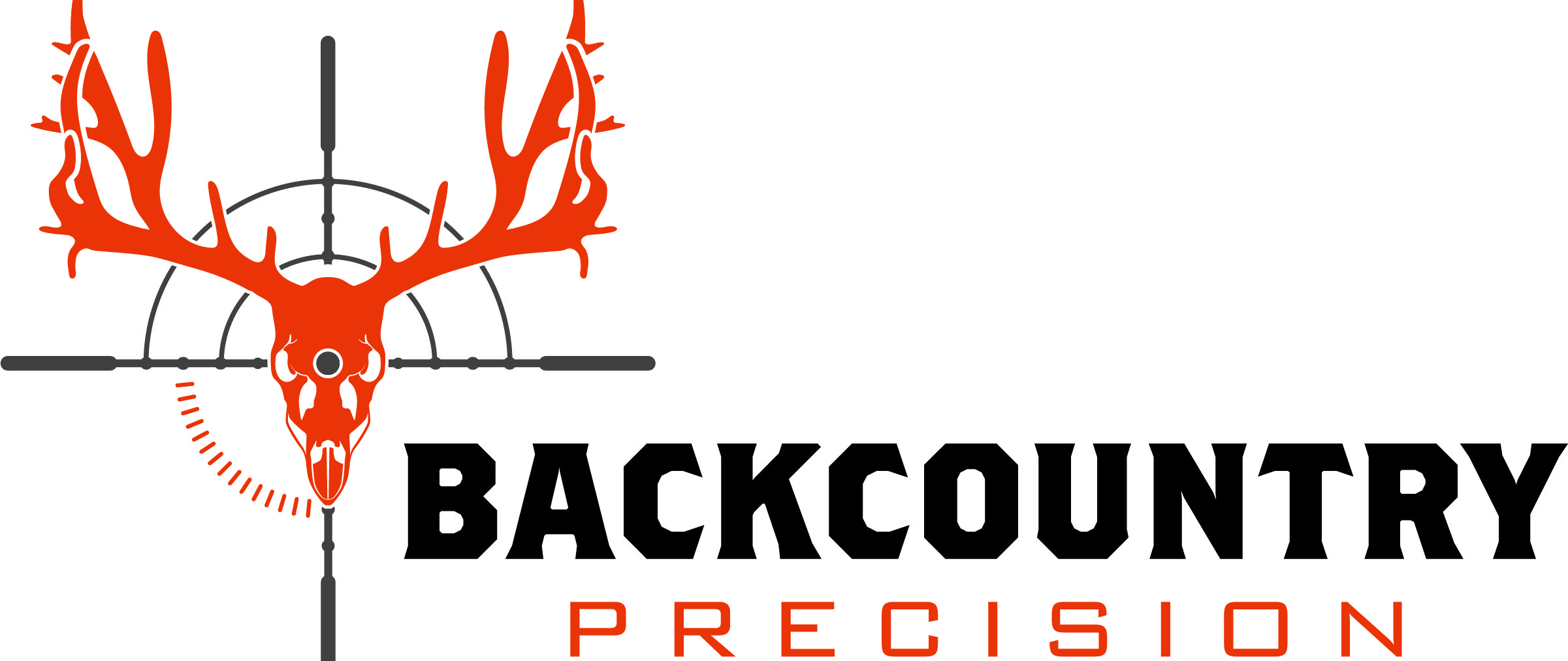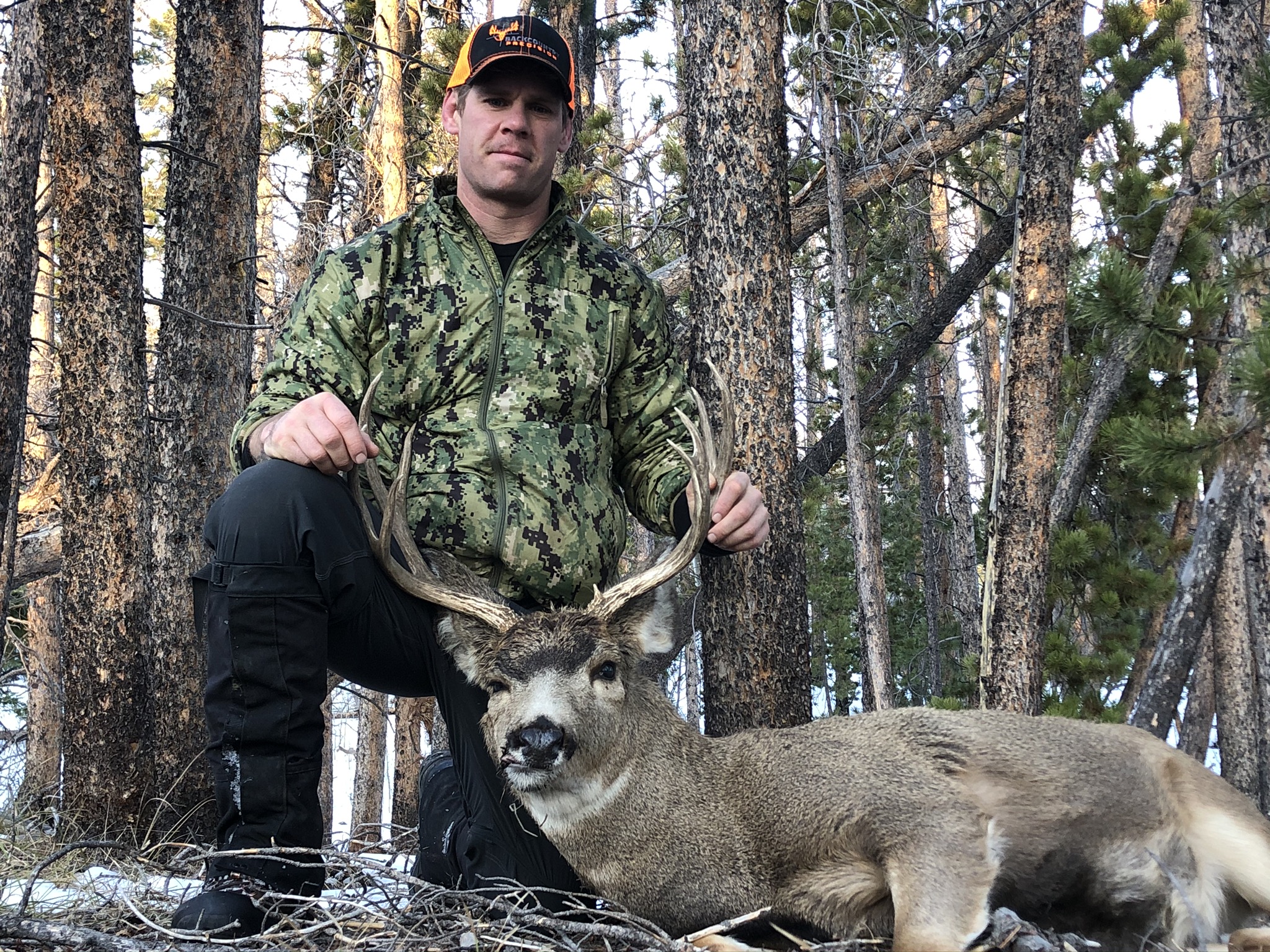2019 Hunting Recap – Part III: Colorado Buck
This is part three of the 2019 Colorado season. This was a fourth season rifle hunt for mule deer in a unit where I ended up getting my 2018 194” B&C the year prior. Although, I didn’t expect to top that, and I’ll be lucky if I ever do unless I’m willing to pay a bunch of money for a private ranch hunt, but, I had a great time this year and end up filling the tag earlier than expected. Now I don’t ever hope to take a long shot but I like to be prepared to. With today’s technology and capabilities of weaponry and with the correct training I always want to be in a position where I can take a shot under the right conditions if the opportunity presents itself. In my 2018 buck that I mentioned, I had to utilize my background and training in order to make that shot, he was just over 500yds moving at about 3 miles an hour with his head low sniffing a doe that was ahead of him. Fourth season is my favorite time to hunt these guys every year.
I like to sit on a doe or a group of does for a good hour before moving on, because this time of year inevitably there’s a buck that is on his way to check her out to see if she’s in heat. A buck will travel so much during this time of year the action is almost nonstop. The way I imagine this when I’m sitting on doe, is any buck downwind of her is smelling her scent and heading her way to check her out. Now that’s not always the case however there’s a really good chance if you’re standing in he deer woods after November 15th. This mindset is what keeps me focused and in the game knowing that at any time a buck could step out. To add to that, the larger the group of does you can find to sit on, the more chances a buck has scented them and is on his way. Furthermore, if you can find a large group in the morning or evening, in my mind that’s like hitting the jackpot this time of year.
 So back to the hunt, I arrived on Friday afternoon and I had three days to hunt. Friday evening I was able to get four hours of hunting in and unexpectedly get it done early. Now this is at lower elevation bouncing between BLM and National Forest land due to the snow this time of year that has pushed most critters out of the high country.
So back to the hunt, I arrived on Friday afternoon and I had three days to hunt. Friday evening I was able to get four hours of hunting in and unexpectedly get it done early. Now this is at lower elevation bouncing between BLM and National Forest land due to the snow this time of year that has pushed most critters out of the high country. This unit is predominately wilderness so it goes to national forest and BLM very quick at lower elevations. The wilderness had about a foot and a half of snow and where I was at about 8-10” on northern facing slopes and very little on south facing slopes allowing the deer and elk to get to the grass still. Like classic fashion this time of year, what separates those that are consistently successful is the willingness to do some hiking. With added layers and weight in your pack, plus frozen snow to walk through, most people don’t venture far from the roads. After just crossing one drainage I ran into three different sets of doe.
I had one doe that I only sat on for 10 minutes because I just got there and I wanted to check out someglassing spots I knew ahead and I was racing against daylight. After moving on, minutes later I spooked 4 doe and then about an hour after that I stopped on the carcass of my B&C from last year and glassed back across the canyon to the spot where I had shot from. To my surprised there was about four adults and 6 – 7 fawns on the other side of the canyon, but they were down the ridgeline pretty far. I glassed for the remaining hour in anticipation that a buck would come out of cover any moment.
It happened but not until the last five minutes of daylight. Part of why I continued to stay there and not move was in my excitement that I would miss a buck coming out to check does. Staying in one spot could apply to earlier season hunts where you might as well just stay put until you actually glass something up, but during late season hunts, and especially considering this large group size, I should’ve hedged my bets that there was a buck near and crossed the canyon while I had the time. It would’ve took me 30 minutes to cross but that would’ve gave me a good 30 minutes to get set up and have a much closer shot opportunity if something came out. But I didn’t close the distance and sure enough the last five minutes the buck didn’t just arrive, he had been there the entire time in a small island of trees bedded down. He had just finally stood up and walked up the hill following the does once they got out of his comfort range of about 75 yards in front of him. So I did my thing.
Quickly transferring from sitting behind the tripod with binos to ranging the buck at 1096yds, adjusting the scope, opening the caps, and setting the parallax. He walked another 15yrds, stopped and looked around, squeezing the trigger (90* trigger control), I held for a little bit of right to left wind and let her rip. Nothing happened. I accounted for about a 2 mile an hour wind, if anything it was more wind not less so I held a half mil which would be about 4 1/2 mile an hour wind at that distance for my gun and reengaged. This time I saw his back drop first followed by his front body and the hollow sound of a thump. I paused for a couple seconds in the scope, didn’t see movement. 40 minutes later after getting to where I shot the buck I realized he wasn’t there anymore. With my headlamp on at this point I saw a pair of eyes from about 30 yards away peering over the sagebrush. Right about the time my instinct was to draw my pistol to finish him off. I realized, one, it’s nighttime and technically I shouldn’t be shooting but luckily I didn’t have the opportunity to make that decision because he hopped up and ran up to the top of the ridge line 100yrds away from me, paused for a second to look back and then ran down into the timber on the north side of the hill. On the north side of the hill I knew there was plenty of snow to make tracking easier so I decided to let him bed down and come back in the morning. I spent a couple hours getting back to my jeep that night and a few more driving around to a closer point about a mile away from where the buck was.
 I woke up early next morning, went to the top of the ridge line where I last saw him go into the trees, and of course there was a bunch other tracks that were following him trying to find out where their buddy had went. After discerning which tracks I thought were his I followed him for about 100yds down into the timber. While I was headed down the slope my hopes of recovering him started to diminish because he wasn’t bleeding. Sure enough I came to the spot where there was a pile of blood where he had stood for a few minutes and from there I follow the tracks with my eyes to see him expired about 20yrds away underneath a tree where he bedded for the last time. The feeling of relief knowing that I didn’t shoot something that I wouldn’t be able to make use of its meat was unbelievable. I hope not to make too many shots like this that are at the edge of my comfort zone but that’s why long range shooting is a skill that must always be honed and tested so if the hunting opportunity presents itself you can determine if it’s an ethical shot or not.
I woke up early next morning, went to the top of the ridge line where I last saw him go into the trees, and of course there was a bunch other tracks that were following him trying to find out where their buddy had went. After discerning which tracks I thought were his I followed him for about 100yds down into the timber. While I was headed down the slope my hopes of recovering him started to diminish because he wasn’t bleeding. Sure enough I came to the spot where there was a pile of blood where he had stood for a few minutes and from there I follow the tracks with my eyes to see him expired about 20yrds away underneath a tree where he bedded for the last time. The feeling of relief knowing that I didn’t shoot something that I wouldn’t be able to make use of its meat was unbelievable. I hope not to make too many shots like this that are at the edge of my comfort zone but that’s why long range shooting is a skill that must always be honed and tested so if the hunting opportunity presents itself you can determine if it’s an ethical shot or not.
Some people reading this might think I shouldn’t have shot that far in the first place, and maybe they’re right, but those that understand the discipline and the practice this entails, realize the amount of training and respect that is given to the animal before the season even opens. If I were to tell you I killed the animal in its tracks the first shot, then you probably wouldn’t have questioned the ethics behind it, you would have thought “he knows what he’s doing and he made a good shot”. The truth is I do know what I’m doing but like anyone who has hunted, misses happen, no different than the large untrained population of hunters that miss shots less than 200yrds every year. No one thinks to call that un-ethical, they just think “that wasn’t very far, what a bad shot”. But, what is considered far? To some 200yrds is a challenge, for others, the challenge doesn’t start until 800+ if environmental conditions permitting. To each their own.
Backcountry Precision
Blood. Sweat. Reward.

